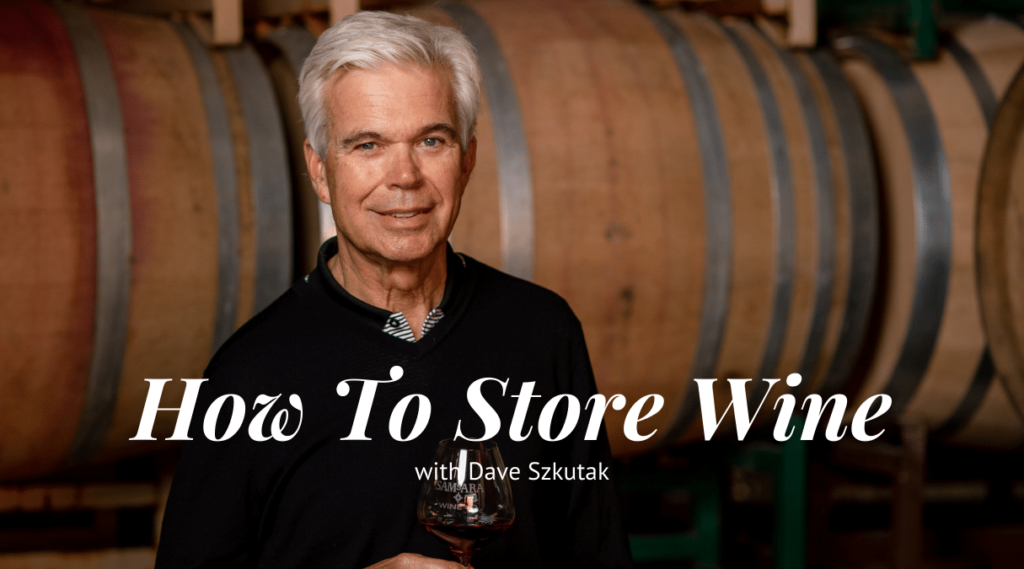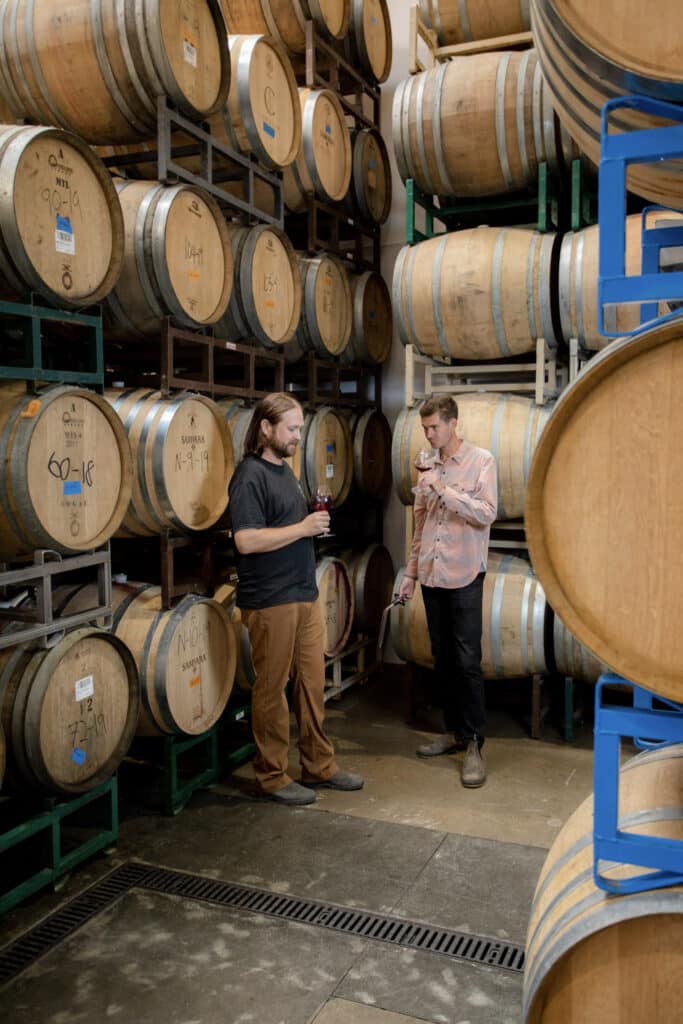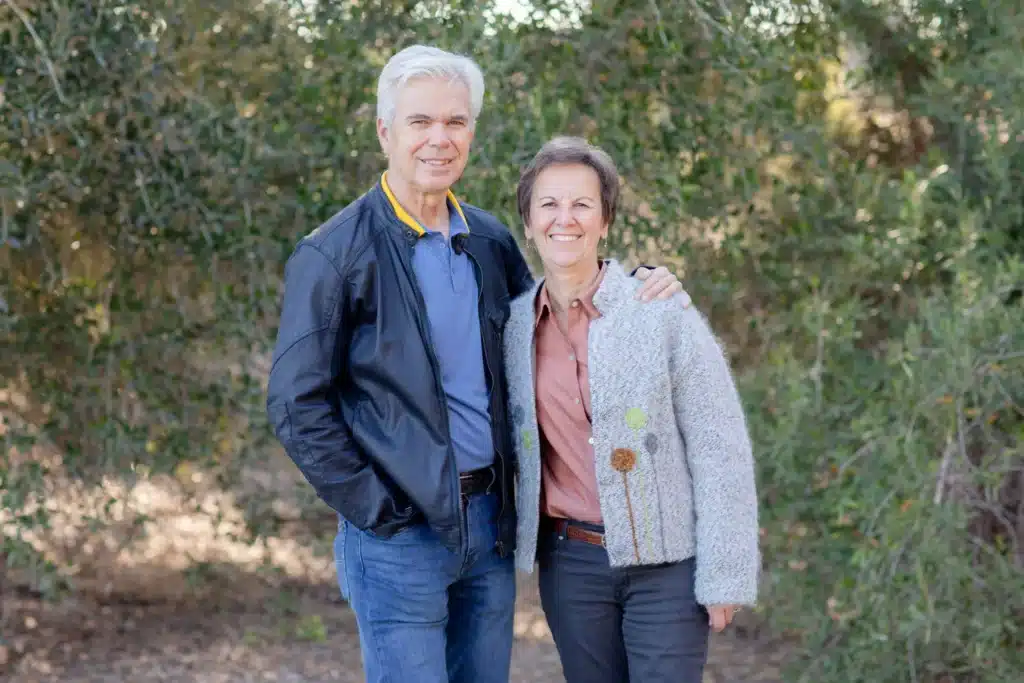No products in the cart.
How to Store Wine

SAMsARA Vintner/Owner and WSET Level 4 Diploma holder, Dave Szkutak, wants nothing more than to rid the world of unsafe wine storage conditions. Why? Because there is nothing worse than patiently waiting for a wine to mature, only to open it and find it’s been poorly cared for. Here is Dave’s rule for how to store wine at home: Find a place that is consistently cool, dark, and away from vibration.
Off the bat, storing wine on top of the refrigerator, or anywhere in the kitchen for that matter, is basically the worst place to store your wine, even in the short term. Your kitchen has wild daily temperature fluctuations, is usually one of the lightest/brightest rooms in the house, the top of the fridge is especially warm, AND even the best refrigerators will vibrate ever so slightly. If your bottles are on top of the fridge, move them ASAP!
Always Cool
Did you know that storing wine at temperatures higher than 70°F will age a wine more quickly than is usually desirable? And if it gets much hotter than 70°F, your wine may actually cook, resulting in flat aromas and flavors.
What is the best temperature to store wine? The ideal temperature range for wine storage is between 45°F and 65°F (we store at 55°F). Warmer storage can denature proteins in the wine and lead to those dreaded “cooked” flavors. To illustrate, a wine cellared at 73°F will age (depending on the wine) eight times faster than one stored at 55°F.
Interestingly, what is even worse for wine than being stored outside of its ideal temperature band is fluctuation in storage temperature. In fact, fluctuations exacerbate the negative effects of heating the wine by allowing air/oxygen into your bottles. Imagine this: As your storage environment warms up, the wine (and air) inside your bottles warms up and expands, either pushing out the cork ever so slightly or pushing some of the air/wine past the cork. Conversely, as your storage environment cools, the contents of the bottle will contract, drawing air/oxygen into the bottle. Over many temperature fluctuations, quite a bit of outside air can actually replace the evaporating wine. This leads to the low fill level or ullage seen in older wines, and the oxidized flavor of others.
Since oxygen, and therefore oxidation, is the single most damaging thing for wine, bottles that have undergone repeated temperature cycling tend to lose their freshness (at best) or get totally skunked. For wine to age gracefully and appropriately, temperature fluctuations must be minimized in both magnitude and frequency. Fluctuations of even just 3°F can be very damaging if they occur on a daily basis!
Always Dark
The ultraviolet rays (from the sun or even fluorescent/halogen light) degrade and prematurely age wine by activating chemicals that change a wine’s flavor and structure. UV rays agitate the naturally occurring riboflavin (Vitamin B2) and pantothenic acid (Vitamin B5) in wine making them reactive with naturally present amino acids. The reaction, called “light strike”, yields sulfur-containing compounds that we can smell even at very low levels. Gross!
Colored glass bottles actually provide a small barrier from UV rays. However, just 3 hours of sun exposure is all it takes for wine damage to occur in clear bottles. Wine in green bottles takes only 18 hours. Knowing this may make you consider not only where you store your wine, but where your local retailer stores the wine you buy!
Always Quiet (& Free From Vibration)
Why should I keep my wine in a vibration free zone? Wine experts have two theories about why vibration ruins wine: sediment and chemical reactions.
According to the sediment theory, as a wine ages, solid matter in the wine naturally settles out of the liquid. When a wine experiences constant or frequent vibration, the liquid and sediment contained within, is continually agitated and doesn’t have the opportunity separate out from the rest of the wine, altering its flavor. This is why many collectors will allow wines to sit upright and undisturbed for a few days wines before drinking them; they want the sediment to settle to the bottom of the bottle.
There is also the theory that vibrations will cause changes in the chemistry of your wine. Vibration is thought to cause an increase in refractive index, propanol, and isoamyl alcohol alongside a decrease in tartaric acid, esters, and succinic acid: The increase in specific alcohols causes the wine to become sweeter and less aromatic (with a smell similar to cooked potatoes), and produce high levels of acetone (causing a fuel-like smell), while the decrease in tartaric acid, esters, and succinic acid causes the wine to look and taste dull and less like wine. No bueno!
The good news is avoiding vibrations should be a pretty straightforward task. Don’t store your wine on or in anything that vibrates! This means the washing machine, clothes dryer, dishwasher and refrigerator are off limits. On top of stereo equipment of a guitar amp is probably not good either, but you already knew that . . .
Our Lompoc Wine Storage Facility
At SAMsARA not only do we believe in extended barrel aging so that our wines are ready to drink when release, but we also are meticulous with our wines once they’re bottled. We age our bottled wines in a warehouse dedicated solely to wine storage in Lompoc, CA. Our climate controlled facility (cool) windowless (dark) facility is far from busy streets, highways, and rail lines (quiet, vibration-free ) provides ideal conditions for wines to rest comfortably. There they sit, some as old as the 2002 vintage, until we decide to bring them to our tasting rooms or until shipment to a customer.
Conclusion
Heat, light, temperature fluctuation and vibration can have a negative on wines that are not adequately protected from these damaging elements. Even if you don’t have access to specialized space or equipment to keep wines “perfectly cellared”, do your best to mitigate these damaging negative influences and your wines will be in better condition when you’re ready to enjoy them.




